
Tones
Now George DeWolfe said look at the b&w image - BUT how?
If one was converting a colour photo to b&w, then one would inspect the
RGB channels and try and get the best results by blending and curving them,
rather than just go for a de-saturation (i.e. 60% green, 30% red and 10% blue)
of the image.
So here are the individual RGB channels

The Blue channel has noise and is weak, so I will replace the Blue with the Red, just set the highlight and shadow points and de-saturate to get a b&w rendition.
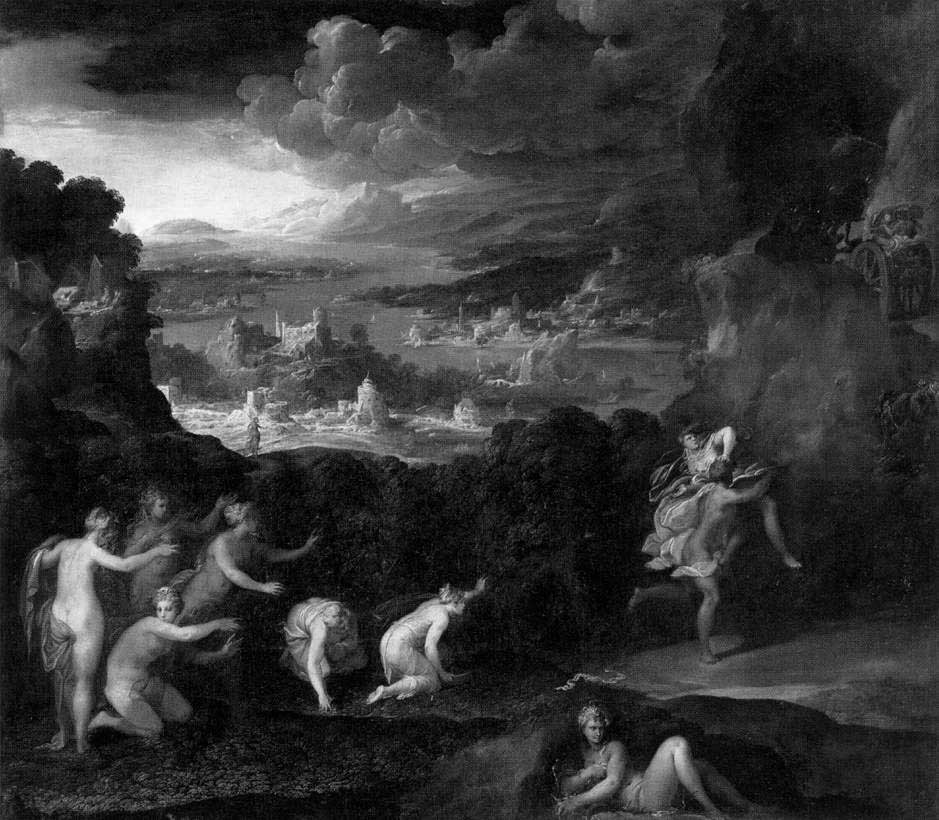
Still some image.
|
Now lets inspect the tonal range in a Five Stop Dynamic Range (green shows the range). On the left are the highlights (100-80%)
|
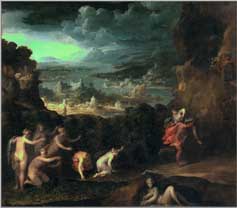 |
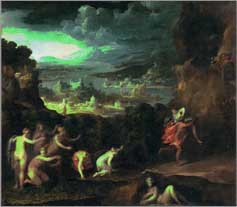 |
| Now the mid tones (40-60%) of the image -
generally regarded as the most important
and the histogram, on the right, of the entire coloured image |
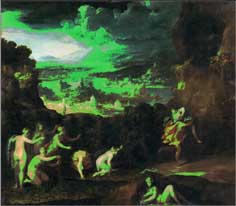 |
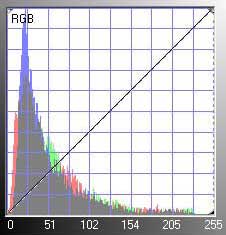 |
| and the 3/4 tones (20-40%) on the
left
and finally the shadows (0-20%) on the right. |
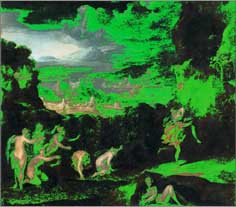 |
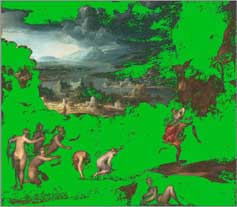 |
'Twas as expected, the majority of the image is dark! But one can see the pattern of dark to light in the image with the insertion of the figures and castles within it.